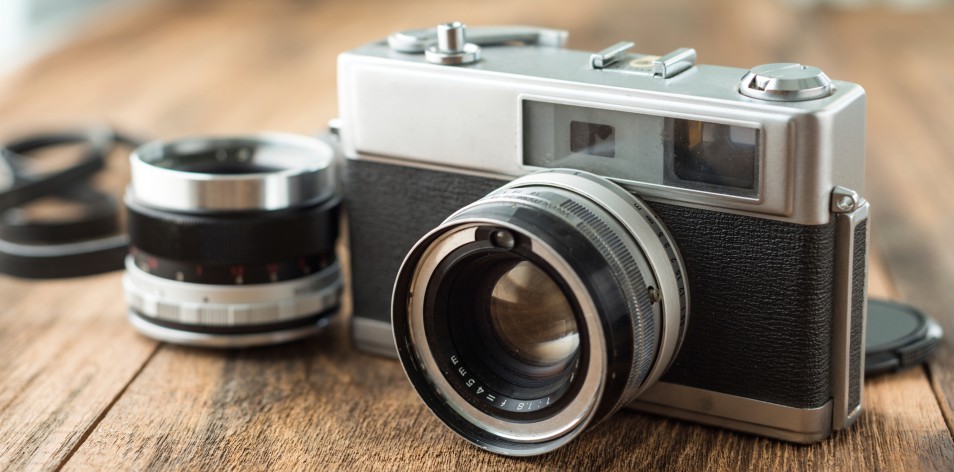It was almost a year ago that the Kamra corneal inlay (AcuFocus) received FDA approval as a novel device capable of providing presbyopic correction in the nondominant eye of phakic, emmetropic patients. More recently, in December 2015, a paper published in the American Journal of Ophthalmology1 described a prospective case series of 12 cataract surgery patients implanted monocularly with the IC-8 IOL (AcuFocus). This IOL is based on the Kamra inlay design, utilizing small-aperture optics for patients undergoing cataract surgery. In addition, there are several companies conducting investigative trials on topical ophthalmic formulations of miotics in an attempt to provide a pharmacologically induced small-aperture optic, ie, the pupil, to treat presbyopia.
Like your camera’s F-stop, smaller apertures are capable of extending the depth of focus and may very well offer an option for treating presbyopia. So, as the press releases and studies come in, it is important to understand what happens when you increase the F-stop on your camera (higher F-stop equals smaller aperture … more on this later) and that smaller apertures aren’t the only way to extend the depth of field.
Many studies have demonstrated an increased depth of focus in patients who have higher amounts of spherical aberration, be it negative or positive. Recall that the average individual undergoing cataract surgery has approximately 0.26 μm of positive spherical aberration from the cornea. For more than a decade, most surgeons have been attempting to neutralize this by implanting a negative aspheric IOL. This has also garnered interest as a means to treat presbyopia, and it is not surprising that there is now a new generation of IOLs on the horizon utilizing hyperaspheric, hyperprolate optics to extend the depth of field. Keep in mind, however, that there is a cutoff, whereby the increase in spherical aberration will cause a loss in distance visual acuity and contrast sensitivity as well as an increase in symptoms of glare and starbursts. Likewise, it will be interesting to see how the effect of decentration of these IOLs will affect outcomes, as the optics drop off if they aren’t perfectly centered. (Thank goodness for femtosecond lasers!)
Another means of extending the depth of focus involves the use of diffractive technology. Abbott Medical Optics has introduced the Tecnis Symfony IOL, which is currently available outside of the United States and still under investigation in the United States. As opposed to the diffractive gratings in a multifocal IOL that create two discrete foci, the Symfony IOL introduces a modification of the height and the profile of the diffractive echelette to elongate the depth of focus rather than split light rays. The loss of contrast sensitivity and image quality that would occur as a result of a diffractive optic is balanced by complete neutralization of chromatic aberration and spherical aberration. The combination of these optical properties appears to deliver a very flat defocus curve from infinity to about 1.50 D of defocus, allowing patients to see without glasses for almost everything except reading fine print.
That brings us back to the one current FDA-approved technology that can extend the depth of focus: small-aperture optics. Small apertures work by blocking unfocused peripheral light rays and reducing the size of the blur circle. It is the same effect of an F-stop, or aperture size, on a camera. But changing the aperture size isn’t without consequence to image quality. Let’s use the concept as it applies to photography. When you lower the F-stop on a camera, you will decrease the depth of field. The effect will be to increase the focus of a very distinct subject, but the background and foreground of that image will be blurred—think best for macro shots or portraits. On the other hand, when you increase the F-stop, you are, in effect, decreasing the aperture size and therefore increasing the depth of field—think landscape shot. But there is a catch in photography: If you decrease the aperture size, you must be sure to have ample light or at least be able to compensate with a slower shutter speed. Will these concepts translate to human optics altered by small apertures? Will the optical performance fall short in dim light? Will blink rates decrease?
A CURE OR A CRUTCH?
Once again, the ability to compensate for presbyopia continues to make strides, but one can only wonder if we ever might find a cure rather than a crutch. What all of these options offer is an extended depth of focus similar to multifocal IOLs but without the risk of halos and improved contrast sensitivity and modulation transfer function compared with multifocal IOLs. Will that make these options better than multifocal IOLs? All I can say is that in optics, you have to give something to get something. Nevertheless, it is certainly exciting to see advances become available to the billions of individuals who suffer from this condition.
1. Grabner G, Ang RE, Vilupuru S. The small-aperture IC-8 intraocular lens: a new concept for added depth of focus in cataract patients. Am J Ophthalmol. 2015;160(6):1176-1184.



